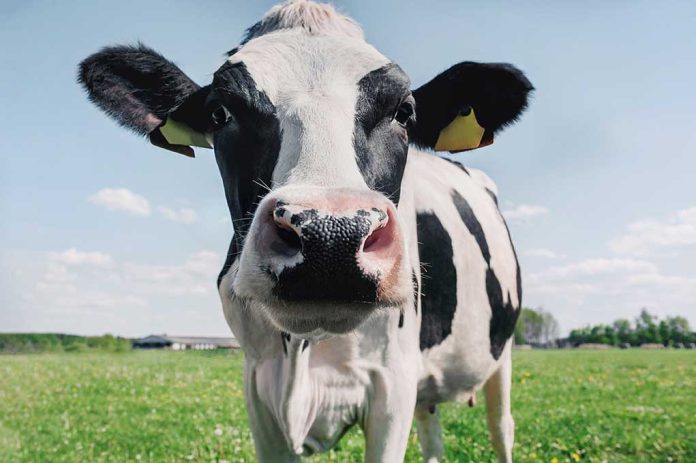
The H5N1 D1.1 bird flu strain now affecting cows in Nevada poses a new threat, raising concerns about its potential spread to humans.
Key Takeaways
- The D1.1 bird flu strain, previously found in birds, is now detected in Nevada cows, marking its first occurrence in cattle.
- This strain has been linked to severe human cases, including a fatality in Louisiana.
- Identifying D1.1 in cow herds challenges prior assumptions about bird-to-cow transmission rarity.
- The USDA continues its existing eradication strategy despite this new discovery.
- Biosecurity measures must be intensified to prevent the disease’s spread and protect public health.
Bird Flu Strain Found in Nevada Cattle
At least four cattle herds in Nevada have been diagnosed with the H5N1 bird flu strain, known as D1.1. Typically associated with birds, this strain has now crossed into the cattle sector for the first time. The discovery, confirmed by the U.S. Department of Agriculture’s Animal and Plant Health Inspection Service, complicates previous theories that bird flu transmission to cows was sporadic.
Four new cases in Churchill County have resulted in quarantines, with fever and mild respiratory symptoms noted in cows. This marks a substantial challenge for animal health officials, who previously linked cow infections only to the B3.13 strain since a 2023 Texas spillover.
Human Health Risks and Wider Impact
The D1.1 strain is recognized for its severe impact on humans, including a recent fatality in Louisiana. Symptoms surpass the mild ones typically associated with the B3.13 strain, necessitating urgent action. However, the CDC underscores that among human bird flu cases in the U.S., exposures are largely from poultry and dairy cows.
“The detection does not change USDA’s HPAI eradication strategy” – U.S. Department of Agriculture’s Animal and Plant Health Inspection Service
This situation highlights the potential reach of such viruses, urging immediate attention to protecting both human and animal populations. Symptoms reported previously include fever, cough, and reduced milk production – severities necessitating a governmental collaborative approach.
Protective Measures and Future Strategies
Health bodies stress the importance of enhanced biosecurity practices among farmers and handlers to curb further spread. Vigilance against bird flu strains mutating further is necessary as traits allowing enhanced transmission could develop. The USDA is actively investigating to limit disease spread and potential economic impacts, such as increased egg prices resulting from affected chickens.
“This is truly … unfolding into a nightmare scenario. We have no idea how widespread this version of the virus already is in cattle herds.” – John Korslund, highlighting the gravity of the situation.
Research continues into human-cow transmission specifics, with some implying migration patterns of nonnative birds as a potential cause. As understanding evolves, the development of a bovine vaccine might prove crucial in controlling outbreaks and ensuring agricultural stability across affected states.
Sources
1. Deadly version of H5N1 bird flu spills over into Nevada dairy cattle














